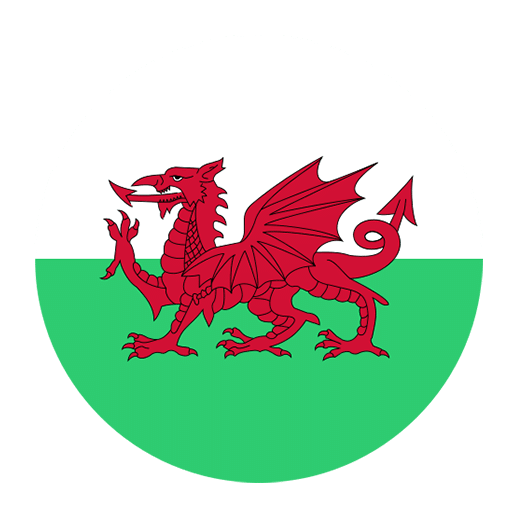Learning how to express time and dates in Welsh can be a fascinating and enriching experience, especially if you are an English speaker. Welsh, or Cymraeg as it is known in its native tongue, is a Celtic language spoken primarily in Wales. It has a rich history and a unique structure that can provide an interesting challenge for language learners. Understanding how to talk about time and dates is fundamental in any language, and Welsh is no exception. This article will guide you through the essential vocabulary and grammar needed to master these aspects of the Welsh language.
Telling Time in Welsh
To begin with, let’s tackle the basics of telling time in Welsh. Here is a breakdown of the necessary vocabulary and structure you’ll need.
Basic Vocabulary for Time
– **Amser** – Time
– **Awr** – Hour
– **Munud** – Minute
– **Eiliad** – Second
– **Hanner** – Half
– **Chwarter** – Quarter
Numbers
First, it’s essential to know the numbers in Welsh. Here are the numbers from one to twelve, as these are most frequently used when telling time:
1. **Un**
2. **Dau**
3. **Tri**
4. **Pedwar**
5. **Pump**
6. **Chwech**
7. **Saith**
8. **Wyth**
9. **Naw**
10. **Deg**
11. **Un ar ddeg**
12. **Deuddeg**
For higher numbers, it’s useful to know:
– **Ugain** – Twenty
– **Deg ar hugain** – Thirty
– **Deugain** – Forty
– **Hanner cant** – Fifty
Structure of Telling Time
When telling time in Welsh, the structure is somewhat similar to English but with its unique twists.
– To say “It is [hour] o’clock,” you use: **Mae hi’n [hour] o’r gloch**.
– For example, “It is three o’clock” would be: **Mae hi’n dri o’r gloch**.
– To express half past the hour, you say: **Mae hi’n hanner awr wedi [hour]**.
– For instance, “It is half past five” is: **Mae hi’n hanner awr wedi pump**.
– For a quarter past the hour, you use: **Mae hi’n chwarter wedi [hour]**.
– “It is a quarter past seven” becomes: **Mae hi’n chwarter wedi saith**.
– To say a quarter to the hour, you say: **Mae hi’n chwarter i [next hour]**.
– “It is a quarter to nine” is: **Mae hi’n chwarter i naw**.
– For minutes past the hour, use: **Mae hi’n [minutes] munud wedi [hour]**.
– “It is ten minutes past two” would be: **Mae hi’n ddeg munud wedi dau**.
– For minutes to the hour, use: **Mae hi’n [minutes] munud i [next hour]**.
– “It is twenty minutes to four” becomes: **Mae hi’n ugain munud i bedwar**.
Expressing Dates in Welsh
Now that you’ve gotten a handle on telling time, let’s move on to expressing dates in Welsh. This involves knowing the days of the week, months of the year, and how to articulate dates themselves.
Days of the Week
Here are the days of the week in Welsh:
– **Dydd Llun** – Monday
– **Dydd Mawrth** – Tuesday
– **Dydd Mercher** – Wednesday
– **Dydd Iau** – Thursday
– **Dydd Gwener** – Friday
– **Dydd Sadwrn** – Saturday
– **Dydd Sul** – Sunday
When referring to “on [day]”, you simply say **ar Dydd Llun** for “on Monday”, and so forth.
Months of the Year
Next, you’ll need to know the months of the year:
– **Ionawr** – January
– **Chwefror** – February
– **Mawrth** – March
– **Ebrill** – April
– **Mai** – May
– **Mehefin** – June
– **Gorffennaf** – July
– **Awst** – August
– **Medi** – September
– **Hydref** – October
– **Tachwedd** – November
– **Rhagfyr** – December
Expressing Specific Dates
To express specific dates, you’ll need to combine the day, month, and year. Here’s the structure:
– For “the [day] of [month] [year]”, you use: **y [ordinal number] o [month] [year]**.
Ordinal numbers up to 31 are necessary since these are the dates that will appear in a month. Here are the first few ordinal numbers in Welsh:
1. **Cyntaf** – First
2. **Ail** – Second
3. **Trydydd** – Third
4. **Pedwerydd** – Fourth
5. **Pumed** – Fifth
6. **Chweched** – Sixth
7. **Seithfed** – Seventh
8. **Wythfed** – Eighth
9. **Nawfed** – Ninth
10. **Degfed** – Tenth
And so on, up to **deugeinfed** – Twentieth, **un ar hugain** – Twenty-first, etc.
For instance:
– “The 1st of January 2023” would be: **y cyntaf o Ionawr 2023**.
– “The 15th of August 2023” becomes: **y pymthegfed o Awst 2023**.
– “The 30th of September 2023” is: **y tridegfed o Fedi 2023**.
Common Phrases and Questions
It’s also useful to know some common phrases and questions related to time and dates.
Common Phrases
– **Pa amser yw hi?** – What time is it?
– **Faint o’r gloch yw hi?** – What’s the time?
– **Dyddiad geni** – Date of birth
– **Pen-blwydd hapus** – Happy birthday
– **Blwyddyn newydd dda** – Happy New Year
Common Questions
– **Pa ddiwrnod yw e?** – What day is it?
– **Pryd mae’r cyfarfod?** – When is the meeting?
– **Pa ddyddiad yw heddiw?** – What is the date today?
– **Pryd wyt ti’n mynd ar wyliau?** – When are you going on holiday?
Practice Makes Perfect
As with any aspect of language learning, practice is key to mastering how to express time and dates in Welsh. Here are a few tips to help you practice:
1. **Flashcards**: Create flashcards with the Welsh words for numbers, days, months, and ordinal numbers. Test yourself regularly.
2. **Daily Practice**: Try to incorporate telling the time and date in Welsh into your daily routine. For example, start your day by stating the date in Welsh.
3. **Language Exchange**: Find a language partner or join a Welsh language group where you can practice conversing about time and dates.
4. **Use Technology**: Set your devices to Welsh language settings. This will expose you to the language more frequently.
5. **Interactive Apps**: Use language learning apps that focus on Welsh. Many of these have dedicated sections for practicing time and dates.
Conclusion
Learning to express time and dates in Welsh can be an exciting journey. While it may seem challenging at first, with regular practice and immersion, you’ll find yourself becoming more comfortable and confident. Remember to take it step by step, and don’t be afraid to make mistakes – they are a natural part of the learning process. Happy learning, or as they say in Welsh, **dysgu hapus**!

